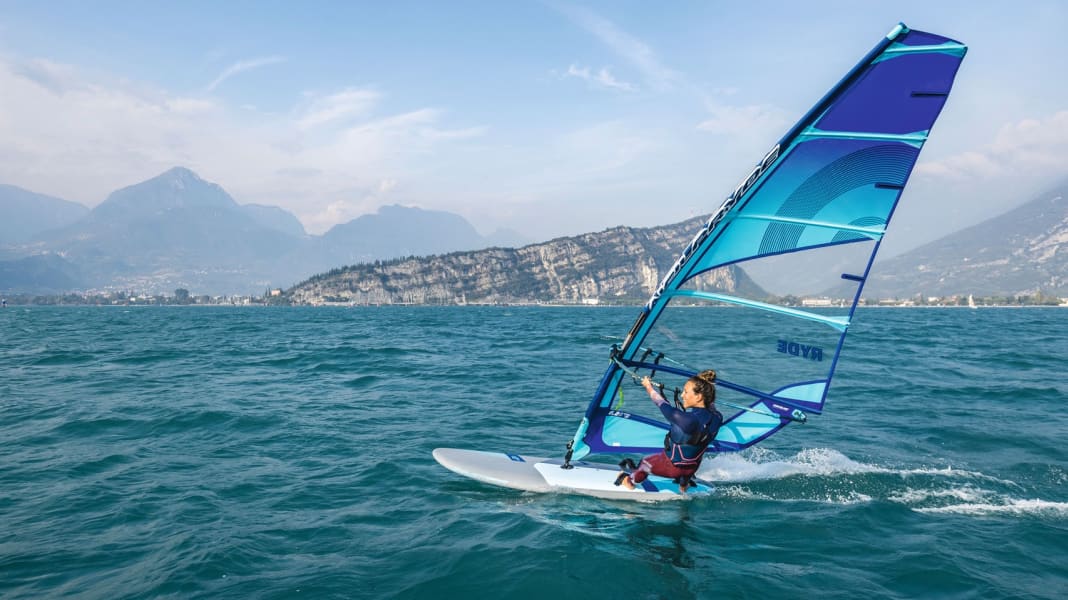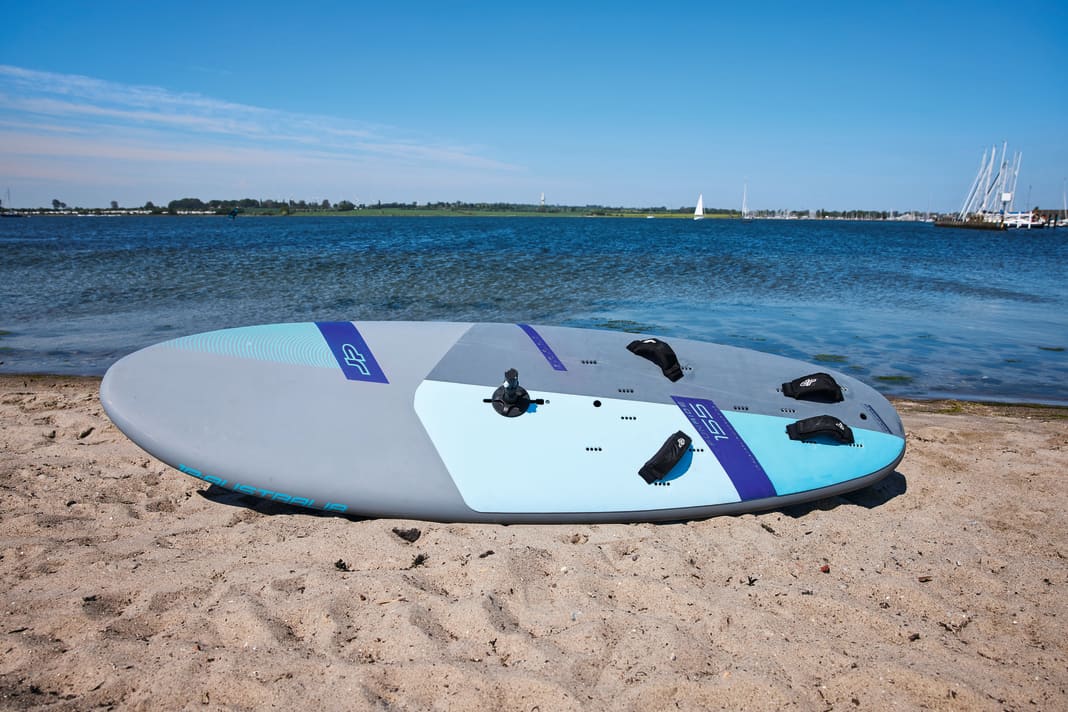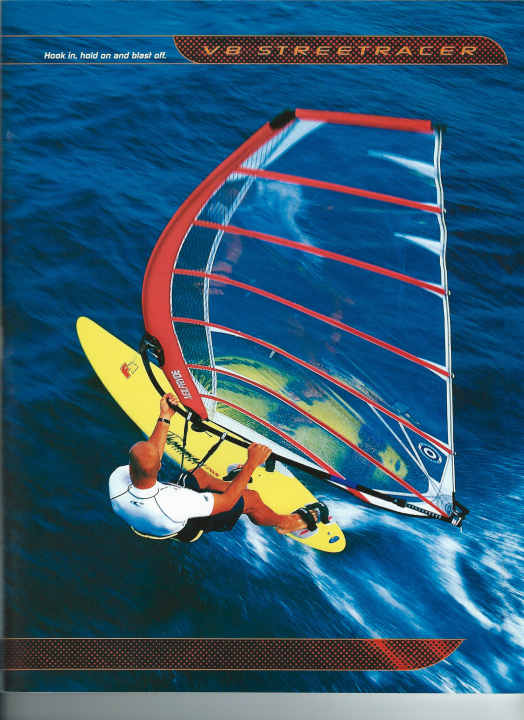
"I used to do that too!" It feels like almost everyone has windsurfed at some point, but many have stopped. But water sports are booming and many people are keen to try windsurfing again. However, one look at the current equipment quickly makes it clear: nothing is the same as it used to be! Where there used to be one model for everything, there are now board and sail types for a wide variety of uses and disciplines - which can be confusing.
We explain what newcomers to windsurfing should look out for in terms of windsurfing equipment and which boards and sails will help them make a successful new start. We also asked two experienced designers about the most striking changes of the last 20 years - NeilPryde sail designer Robert Stroj and JP board designer Werner Gnigler.

The right board for getting back on the bike
Today there are various board classes in the shallow water sector alone - this increases the chance of finding the perfect board for your needs, but also the risk of making the wrong purchase.
Very suitable board classes for getting back into windsurfing are WindSUPs or longboards. With lengths of 250 to 360 centimetres and volumes of between 150 and 300 litres, WindSUPs are optimised for relaxed cruising in light winds through to the first gliding experiences and also offer the dual benefit of stand-up paddling (SUP). This board class is also ideal as a family board. Inflatable concepts can reduce packing dimensions to a minimum. If you want to windsurf with your SUP board, you need to make sure that the board has a thread for the base plate and, if possible, a centre fin or daggerboard as a drift inhibitor.
For those who focus more on glide surfing, the board class Freeride be relevant. Freeride boards are available in sizes from 100 to 170 litres and combine effortless planing with easy control and good manoeuvrability. A wide centre area and multiple strap options give freeriders a wide range of uses, from first attempts at gliding to speed runs, power jibes and even first jumps.
Windsurfing equipment of the category Freemove or freestyle wave differ from freeride boards in that they have a narrower tail, shorter fins and more flex. As a result, they turn tighter during planing manoeuvres such as power jibes, carving 360s or wave riding, but are also more demanding to ride and plane later. They are hardly suitable for use in light winds, not least due to their size with a volume of only 85-125 litres.
The board group is often tempting for many newcomers Freerace or slalom - The promise of maximum top speed is fascinating. However, in order to be able to make the most of this, a high level of riding ability with safe loop surfing in far out positions and appropriate motorisation with a powerful camber sail is required.




Sailing guide for newcomers
The manufacturers' sail ranges have also become increasingly specialised over the years. The most widespread sail group Wave should not deter you as a newcomer. In sizes under 5.0 square metres, there is basically nothing on offer other than wave sails. These are invariably mounted on thin RDM masts and, in addition to the expected surfability, also offer less experienced windsurfers sufficient control, easy manoeuvring and moderate trim forces. They are characterised by a rather flat profile, which is stabilised by only four to five battens.




In the range between five and seven square metres, you have more choice. Sails in the category Freemove often offer a little more profile depth compared to wave sails. In combination with slightly longer boom dimensions, this results in improved planing performance and a more balanced ride - characteristics that are always an advantage on flat water.
Sails of the category Freeride cover sail sizes from 5.5 to 8 square metres and even go one step further compared to freemoving sails: a deeper profile with a longer boom and more batten provide planing power and control on flat water.
Caution is advised for beginners and returners with windsurfing equipment in the categories Freerace and above all Race. These are available on the market in sizes from five to ten square metres and are optimised for top speed and control at the limit. This is achieved by using thicker masts (SDM) and rigid profiles, which are achieved through the use of "camber" - plastic braces that support the batten in the mast sleeve on the mast. However, in order to maximise the performance potential, a high level of riding ability is required, i.e. safe planing and speed riding on sporty freerace or slalom boards and safe water starts. The price for more speed: higher trim forces when rigging, poorer handling in manoeuvres and especially when launching from the water, as the wide mast sleeves absorb a lot of water. Last but not least, sails in the freerace and race categories are usually significantly more expensive than typical freeride sails.
What you should know about modern windsurfing equipment:






How windsurfing equipment has changed
Everything used to be better and alleged new developments are just marketing gimmicks? Sail designer Robert Stroij and shape legend Werner Gnigler explain in an interview why modern windsurfing equipment is more fun and easier to ride!
Robert, what have been the key innovations in sail design over the last 20 years?
The switch to reduced diameter masts (RDM) was certainly a milestone. The idea at the time was to increase breaking strength, but it quickly became clear that there were many positive "side effects": easier rigging, better grip, more sailing comfort. Today, in principle, all sails that still fit on a 430 mast are designed for reduced diameters. Only from a mast length of 4.60 metres is there a switch to standard-diameter masts (SDM).
How have freeride sails changed in terms of their dimensions and profiles in the period in question?
Roughly speaking, there used to be longer mast lengths and the rear side of the sail, the leech, was even tighter. The trend from the racing sector was to build sails with more twist, because they could then release the excess pressure better in gusts. This improves control and handling enormously compared to old sails.
Werner, a lot has changed with boards too. What do you have to consider when getting back into windsurfing?
15 to 20 years ago, it was still a matter of defining the key data for us - length, width, volume. The boards were already fast back then. Today, much more attention is paid to the details: there are strap positions for every board type for every riding ability, sophisticated deck shapes for a more relaxed stance and, of course, the dimensions have been extremely revised. Freeride boards, for example, are now much shorter and wider than they used to be.
Why were the board lengths shortened so much back then?
In the past, sails had significantly more lateral forces, so you needed longer boards - i.e. a long edge in the water to get a good glide. Modern sails offer noticeably more propulsion, so shorter boards are also possible.

Nevertheless, short boards don't suit everyone, after all, you also have to change your riding technique...
There was certainly a time when the trend towards shorter boards was somewhat exaggerated by the industry - as is so often the case with trends. However, it was then realised that boards that are too short cause problems with passive planing and directional stability, especially if you are more passive on deck and don't pump. For this reason, we have been taking a step back for a few years now and I think we have now found a good balance between easy planing and the advantages of compact shapes.
What do you think they are?
Modern freeriders are quite wide in the centre and are therefore stable in the water. Due to the width, you can use slightly longer fins than in the past, which improves planing in wind holes, for example. And, of course, a compact board is more agile and lighter when planing, and it chops less. In manoeuvres, you also benefit from the width in the form of better tipping stability. I know many newcomers who get back on the board after a long break and ride as if they had never stopped. Windsurfing has never been more intuitive!
Further topics for newcomers:

